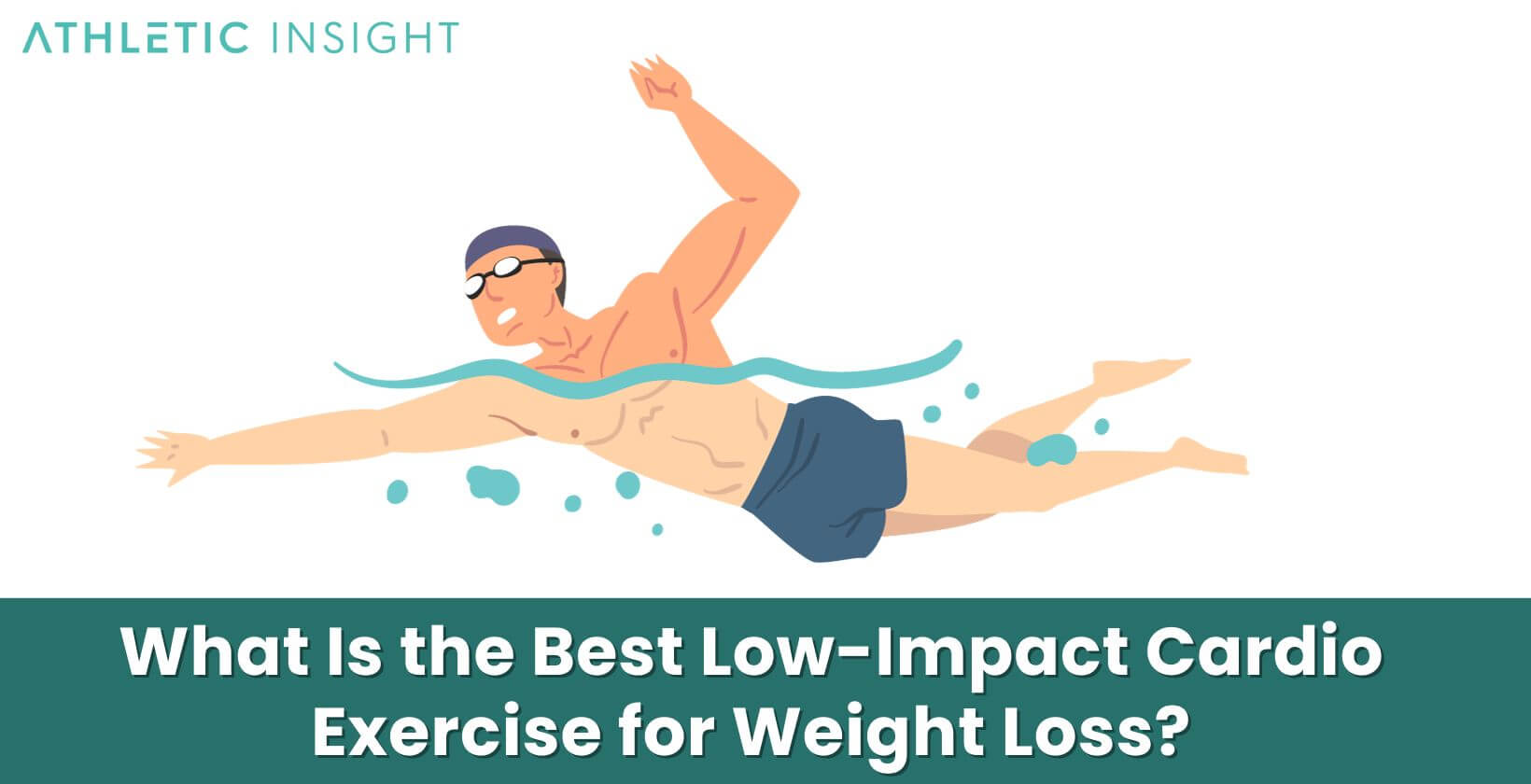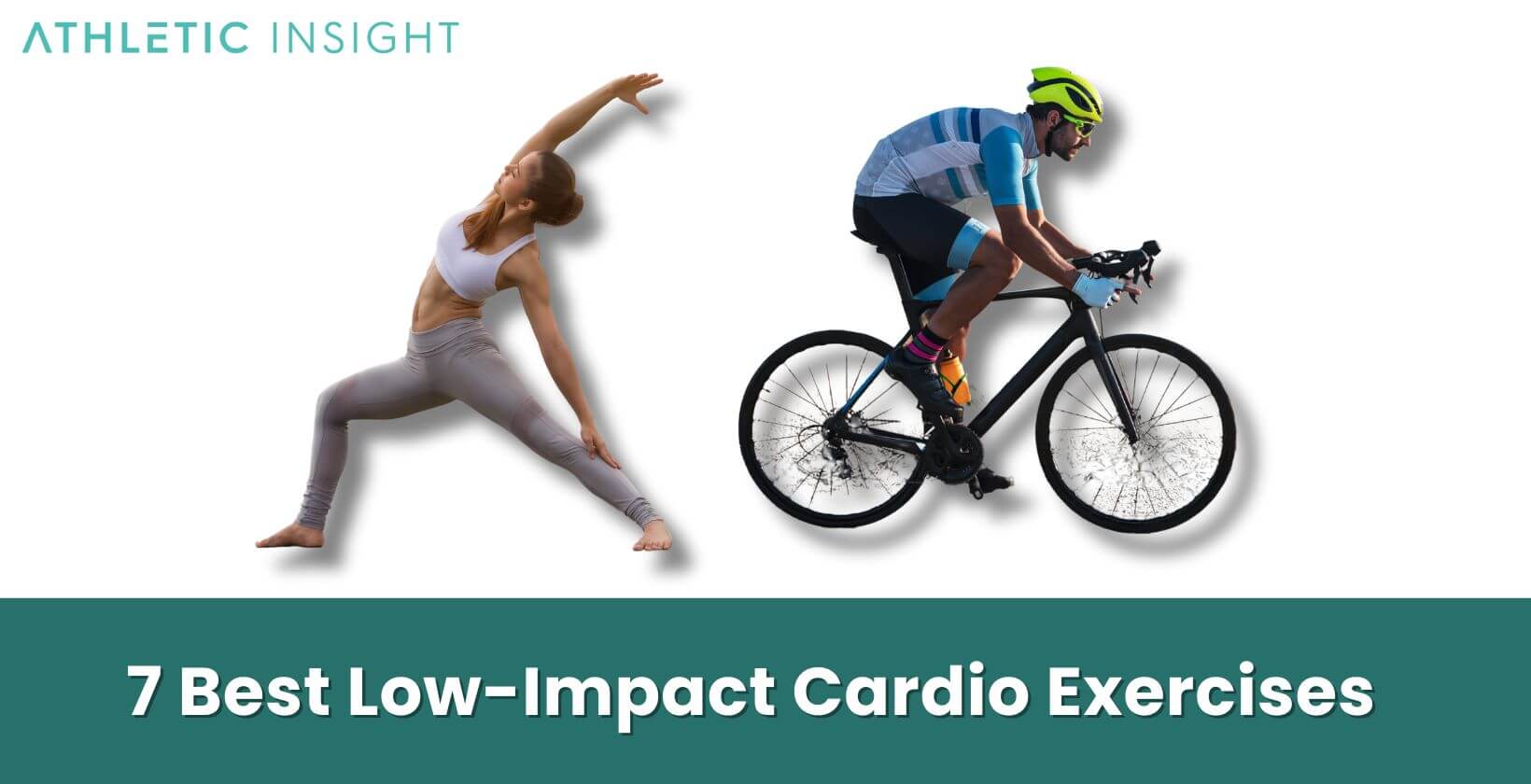Low-impact cardio exercises are gentle on the joints while still providing cardiovascular benefits which is why so many people have started incorporating them into their workouts. Unlike high-impact workouts like running, jumping or weight training, low-impact cardio puts less strain on the body while working the cardiovascular system. The purpose of incorporating low-impact cardio into a workout routine is to improve heart health, burn calories, and boost endurance without risking injury.
Some of the main benefits of low impact cardio exercises include an increased blood flow, weight loss, and reduced blood pressure. When starting a new workout program, low-impact cardio is often recommended, especially for beginners, older adults, or those with injuries, arthritis, or other joint issues. Here are 7 of the top low-impact cardio exercises to consider.
1. Yoga
Yoga is a low-impact exercise that involves performing poses and controlled breathing. It improves flexibility, strength, balance, and relaxation. The gentleness of the movements makes yoga an excellent low-impact cardio option. A 60-minute beginner yoga class can burn around 180 calories.

Yoga is beneficial for reducing stress, increasing mobility, and bringing awareness to the mind-body connection. If you are seeking a more challenging and effective form of yoga that further reduces aches and pains within the body, you should try hot yoga.
2. Elliptical
Working out on an elliptical machine provides a solid cardio workout without the high-impact of running. It’s a smooth, low-impact motion that engages the glutes, quadriceps, hamstrings, and calf muscles while getting your heart pumping. A 30-minute elliptical workout can burn about 200 calories. Using this machine is joint-friendly and ideal for those with knee or hip problems.
3. Swimming
Swimming is an extremely low-impact exercise that provides an efficient full-body workout. The buoyancy of water reduces strain on the joints and limbs. Different strokes like freestyle, backstroke, and breaststroke work various muscle groups as you move through the water. A 30-minute recreational swim burns around 200 calories. Additional benefits are increased lung capacity, muscle strength, and cardiovascular fitness.
4. Walking
Brisk walking is accessible and easy on the joints while providing cardio benefits. It can be done anywhere without equipment while burning calories and fat. A 30-minute power walk can torch around 100 calories. Walking helps improve cholesterol levels, blood pressure, blood sugar control, and mental well-being. Those with limited mobility can still reap the rewards through short, gentle walks.
5. Skating
In-line skating or roller skating provides a fantastic cardio workout that is low-impact on the knees and ankles. Gliding across smooth pavement or a skating rink engages the core and leg muscles. A 45-minute recreational skate session can expend around 300 calories. Skating helps enhance coordination, muscle strength, agility, and cardiovascular endurance in a fun way.
6. Cycling
Stationary bike cycling or outdoor cycling are low-impact yet effective cardio exercises. Pedaling works the glutes, quadriceps, hamstrings, and core muscles. The smooth spinning motion is easy on the joints. A 30-minute cycling workout can burn around 200 calories. Additional perks include strengthened bones, improved muscle tone, and increased stamina.
7. Rowing
Rowing machines provide an efficient cardio and strength workout that is low-impact on the joints. Rowing engages all the major muscle groups in the upper and lower body. Just 30 minutes of moderate rowing can burn around 210 calories. Rowing is great for boosting cardio endurance, muscle growth, and overall physical health.
If you do not have access to a boat for rowing, there are many great rowing machines that you can pick up for an affordable price. The best rowing machines last for many years, so it is an expense that pays for itself.
What Low-Impact Exercise Burns the Most Calories?
Of the low-impact exercises, rowing is the best low impact cardio exercise that consistently burns the most calories in the shortest time. A 160-pound person can expect to burn around 210 calories rowing at a moderate pace for 30 minutes. The full-body motion of rowing works bigger muscles that require more energy. This leads to increased calorie burning compared to less intense low-impact options.
What Is the Best Low-Impact Exercise at Home?
Yoga is one of the best low-impact exercises that can be conveniently done at home. All you need is some floor space and no equipment required. Following along with a yoga video provides flexibility and strength training in a gentle, joint-friendly way. Yoga’s meditation aspects also help reduce stress.
What Is the Best Low-Impact Cardio Exercise for Beginners?
Walking is the best low-impact cardio exercise for beginners. It simply involves walking briskly which almost anyone can do. The intensity is easily adjusted by speeding up or slowing down. Walking gets the heart rate elevated without jarring impact on the joints. It’s accessible anywhere and requires no equipment.
What Is the Best Low-Impact Cardio Exercise for Bad Knees?
For people with knee issues, an elliptical machine provides an excellent low-impact cardio workout. The smooth, elliptical motion is gentle on the knees while still working up a sweat. Handrails on elliptical machines also provide stability and support when needed on joints.
What Is the Best Low-Impact Cardio Exercise for Weight Loss?
Swimming is one of the most effective low-impact exercises for weight loss. Vigorously swimming laps for 30-60 minutes burns significant calories due to the resistance of water. Swimming works the whole body and offers both cardio and muscular benefits. The cool water also helps extend workout time for greater calorie expenditure.

How Do You Lose Belly Fat with Low Impact?
While spot reduction of belly fat is not possible, maintaining a calorie deficit through low-impact cardio and a healthy diet can help reduce overall body fat including around the midsection. Some of the most effective low-impact exercises for losing belly fat include walking, swimming, yoga, and using an elliptical trainer. Losing belly fat requires consistency with regular cardio workouts and a diet low in sugar and processed foods.
How Long Should You Do a Low-Impact Workout?
Most experts recommend at least 150 minutes per week of moderate low-impact cardio exercise to see results. This can be broken up into 5 sessions of 30 minutes each, making it a light cardio workout. For continued weight loss and cardiovascular benefits, aim for 300 minutes per week at a moderately vigorous level by extending sessions or adding more days.
Can You Get Toned with Low Impact?
Yes, it is possible to get toned with low-impact cardio workouts when combined with a healthy diet. While low-impact cardio like walking or swimming helps burn fat, adding some bodyweight strength training provides the muscle tone underneath. Planks, lunges, squats and crunches can all be done with just body weight to build lean muscle and achieve a toned physique.
What Exactly Is a Low-Impact Exercise?
Low-impact exercises are workouts and physical activities that place minimal force and strain on the joints, ligaments, bones, and muscles. Low-impact cardio options get your heart rate up without high levels of impact that could lead to injury. Examples include walking, swimming, cycling, yoga, elliptical machines, and rowing. Impact is reduced by eliminating jumping, running, or other jarring motions.
How Does Low-Impact Cardio Exercise Work?
Low-impact cardio exercises increase heart rate and burn calories by involving large muscle groups in continuous, rhythmic motions. For instance, walking briskly engages the leg and glute muscles to elevate your heart rate. The repetitive nature of low-impact activities delivers cardiovascular benefits. Weight loss occurs due to the calorie deficit created by extended cardio workouts. Low-impact cardio is safer and more sustainable than high-intensity training for improving fitness and health.
What Is the Purpose of Low-Impact Exercise?
The main purposes of low-impact exercise are to improve cardiovascular health, build endurance, burn calories, strengthen muscles, and accelerate weight loss without putting excessive strain on the body. Low-impact workouts are useful for injury prevention and rehabilitation and safely increasing physical activity levels. People can exercise longer with reduced risk of impact injuries or joint pain.
Who Should Do Low-Impact Exercise?
Low-impact exercise is recommended for older adults, people with arthritis, joint injuries or chronic pain, beginners new to exercise, individuals with weak bones, and those who are obese or significantly overweight. Pregnant women may also benefit from low-impact cardio while avoiding high-intensity workouts.

What Are the Benefits of Low-Impact Exercise?
Benefits of low-impact exercises include weight loss and fat burning, improved cardiovascular health, increased endurance and energy, strengthened muscles and bones, reduced risk of injury to joints, better mobility and balance, lower stress and improved mood, and higher quality sleep.
- Weight loss and fat burning
- Improved cardiovascular health
- Increased endurance and energy
- Strengthened muscles and bones
- Reduce risk of injury to joints
- Better mobility and balance
- Lower stress and improved mood
- Higher quality sleep
Is There a Downside to Low-Impact Exercise?
No, there are no major downsides to incorporating low-impact cardio exercises into your workout routine. While they are gentler than high-intensity exercises, low-impact workouts still provide excellent health and fitness benefits for most people when done regularly. It is important to gradually progress the duration and intensity of low-impact sessions to continue seeing improvements.
Are Low-Impact Exercises the Same as Aerobic Exercise?
Yes, low-impact cardio exercises are a form of aerobic exercise. Aerobic means “with oxygen”, referring to continuous, rhythmic activities that increase your heart rate and breathing. All types of low impact aerobic exercises like cycling, swimming, and using an elliptical provide aerobic benefits and count towards weekly aerobic activity guidelines. High-impact exercises like running are also considered aerobic.
Which is Better – Low Impact vs High Impact Exercise?
For the general population, low-to-moderate impact cardio exercises are likely the safer, more sustainable option for improving fitness and health. High-impact exercises like jumping or running place excessive strain on joints and tendons, leading to overuse injuries. Low-impact options like swimming or cycling provide plenty of aerobic benefits without the pounding. However, young athletes may still benefit from high-impact training in moderation.
What is the Difference Between Low-Impact and High Impact Exercise?
The main difference between low and high-impact exercise is the amount of force placed on the body. Low-impact workouts are gentle on the joints, while high-impact workouts involves more pounding, rapid changes in direction, and intensity. Low-impact includes activities like walking, cycling, or the elliptical. High-impact includes running, burpees, jumping jacks, and plyometrics. Low-impact is safer for beginners and those with joint conditions, while high-impact is higher risk but can build greater strength and power.



